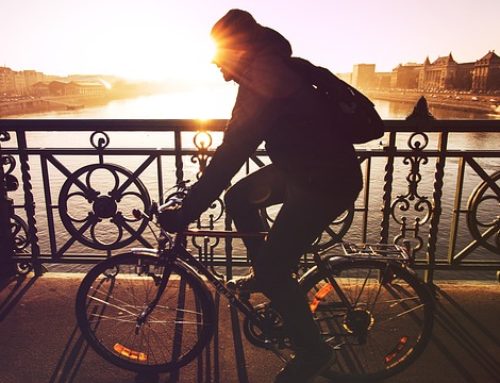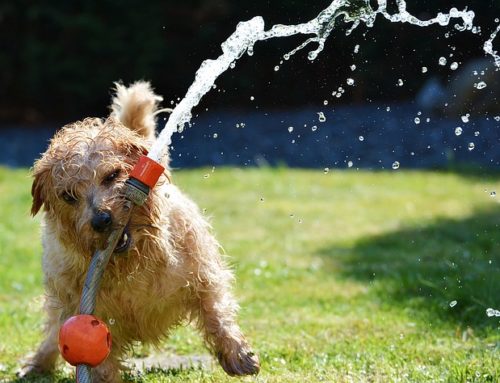 For those who are into their skiing you’ll know how essential it is to exercise those key muscle groups before your ski season break to avoid injury whilst skiing. For those of you new to the sport, be sure to follow this comprehensive pre-season workout to make your learning experience even more enjoyable and pain free.
For those who are into their skiing you’ll know how essential it is to exercise those key muscle groups before your ski season break to avoid injury whilst skiing. For those of you new to the sport, be sure to follow this comprehensive pre-season workout to make your learning experience even more enjoyable and pain free.
In order to compile an effective exercise regime it is important to understand which muscle groups we use most when skiing. These are predominantly the leg muscles; quadriceps, gluteus maximus, adductors and abductors. So what are the functions of each of these muscle groups whilst skiing?
Lower Body Muscles
Quadriceps
The quadriceps are made up of four separate muscles that run along the front of your thigh and combine at a point just below the knee. These four individual muscles are the rectus femoris, vastus intermedius, vastus lateralis, and vastus medialis. The function of this group of muscles is to control knee extension. The ski boot itself is designed to force your knee into slight flexion but then whilst maintaining a tucked skiing position or continually bending and straightening your knee through turns your quadriceps will be working overtime, resulting in that glorious burning sensation to your thighs.
Hamstrings
The hamstrings are located at the upper back of the leg and would usually exist to extend the hip when upright and flex the knee. Their other function is to rotate the lower leg, a movement not common to everyday life but vital when skiing. As you traverse across the piste and make a turn your hamstrings activate and assist in making the turn beautifully smooth…in theory! It is this constant action throughout the day that makes for tight and tired hamstrings.
Gluteus Maximus
The gluteus maximus is one of the most underrated and neglected muscles of the human body. It is the centre point of the musculoskeletal system and is key to stability, lower back agility, sitting, standing, balance, and most core movements. This is one muscle that I tend to concentrate on with patients who experience low back pain and have apparent weak gluteus maximus muscles resulting in the paraspinals and hamstrings doing too much work.
The muscle itself is the largest in the body and provides power to most leg movements. In skiing, any position involving a tucked posture will be relying on this muscle. You may also find yourself relying on you gluts when you use them as a cushion when falling on your bum! It is important that this muscle is well balanced and firing correctly to help relieve unnecessary back and leg pain at the end of a long day’s skiing.
Adductors
The adductors are made up of three main muscles, these being the longus, brevis and magnus. These muscles are essential in bringing your legs together, or whilst skiing…stopping them from separating. For the beginner skier one key technique taught is the snow plow. It is important to ensure that the tips of the skis do not cross and the muscles that control this action are the adductors.
Abductors
The abductors are made up of a number of different muscles, the main ones being the gluteus medius, tensor fascia lata (TFL) and iliotibial band (ITB). I see so many TFL and ITB injuries through my clinic, and mainly as a consequence of a poor running technique or inadequate running shoes. I equally see it in patients who return from skiing holidays with pain radiating down the outside of their legs between the hip and lateral aspect of the knee.
When skiing the abductors are working to push your legs out, so are predominantly used when carving into a turn and pushing against the slope with your inside ski. The ITB itself is not a muscle that enjoys being rubbed or massaged as it falls very close to the femur and can become inflamed when agitated, so the key to avoiding injury of this muscle is to stretch before skiing and exercise before the start of the season.
Upper Body Muscles
Triceps and Core
The upper body is predominantly used for pole planting, stability and balance whilst on the slopes. Your triceps are responsible for extension of your arm from a flexed state, essentially playing a key role as you reach out with your pole and make a turn. As the pole strikes the snow your tricep muscle contracts and propels your body forward into the turn.
It is not surprising that whilst standing on two very slippery planks of carbon fibre the muscles in the body are continually adjusting to stop you from falling over, sometimes with great success, and sometimes not. From the start of your skiing experience your upper body will mainly be at a 45 degree angle in relation to your hips, and the core erector spinae muscles running along either side of your spine and and transverse abdominus muscles are responsible for maintaining this strong and steady position. The other main core muscles used when skiing are the obliques, running down the sides of your waist and working to help you traverse the piste.
Ski Season Exercises
All of these previously mentioned muscles are areas of the body that require a little attention before going off on your holiday. They will of course get quite a workout when you’re there, but you want to do everything you can before you go to make your holiday as pain free as possible whilst also optimising your skiing experience. These exercises are aimed at those who don’t have access to a gym, however some exercises do require a stability ball to provide maximum effect.
Hamstring Curls
It is vital to make sure that your hamstrings and quadriceps (front and back leg) are balanced and working together whilst skiing. Overactive quadriceps can cause you knees to hyper-extend which then shifts your body weight to the back of your skis, giving you a reduced amount of control.
To exercise the hamstrings lie on you back with your feet propped up hip width apart onto a stability ball. Slowly raise your lower back and hips off the floor and maintain a bridge position for a few seconds before slowly straightening your legs, pushing the stability ball away from you. Bend your knees towards you and then straighten once again. Repeat this 8 times across 3 sets.
Calf and Ankle Stability
Step onto the bottom step of the stairs and stand on tip toes so that your heels are hanging over the edge. Slowly push yourself up with your toes and lower yourself down repeatedly, feeling the stretch through your calf muscles. Do this 10 times and repeat across 3 sets.
Plyometric Stability
On the same step, turn around and face the bottom of the stairs. Bend your knees and jump down onto the floor, making sure you land with your feet shoulder width apart and your knees bent to absorb the shock, repeat 10 times across 3 sets. Plyometric exercises aim to increase leg strength, speed, power and balance; all necessary when tackling moguls or even simply tough terrain on the slopes.
Another great plyometric exercise is the jump squat. Stand on the floor and squat down into a skiing position, quickly squat down further and then explosively push up into a jump to try and touch the ceiling. On returning to the ground bend your knees, absorb the landing and return to your original squatting position. Repeat this for 30 seconds across 3 sets, and then progress to holding the bottom squat for 10 seconds before moving into the jump phase.
Hip Mobility and Adductors
Sit on the floor with your legs straight out in-front of you and your feet together. Lean forward and try to touch your toes with your fingers, making sure not to bounce to get there. If unable to grab you toes then place your hands underneath your calf muscles and rest your elbows down the sides of each leg. Drop your chest towards the floor and aim to keep a straight spine. Breathe in and out steadily for 30 seconds and return to a seated position, repeat 3 times.
Tricep Dips
Using your bottom step once again, support yourself with your arms on the bottom step and your feet resting flat on the floor with your knees bent. Slowly dip to lower your body towards the floor but be sure not to rest down. Hold the dip for 2-3 seconds and straighten back up to the starting position. Repeat this for 10 repetitions across 3 sets.
Chiropractic and Skiing
Our Oxford Chiropractor, Dan Ruby, is also a qualified ski instructor and has developed this exercise regime to suit most beginner and intermediate skiers. For the advanced skier these exercises can be modified or the number of repetitions increased to further develop the necessary muscles for skiing.
Espina Chiropractic Clinic is experienced in dealing with sports injuries including the simple aches and pains associated with skiing. Should you wish to discuss your pre-holiday workout, or check in after you holiday to receive a relaxing re-alignment and recovery treatment then please contact us at info@espina.co.uk or call 01235 410708.








